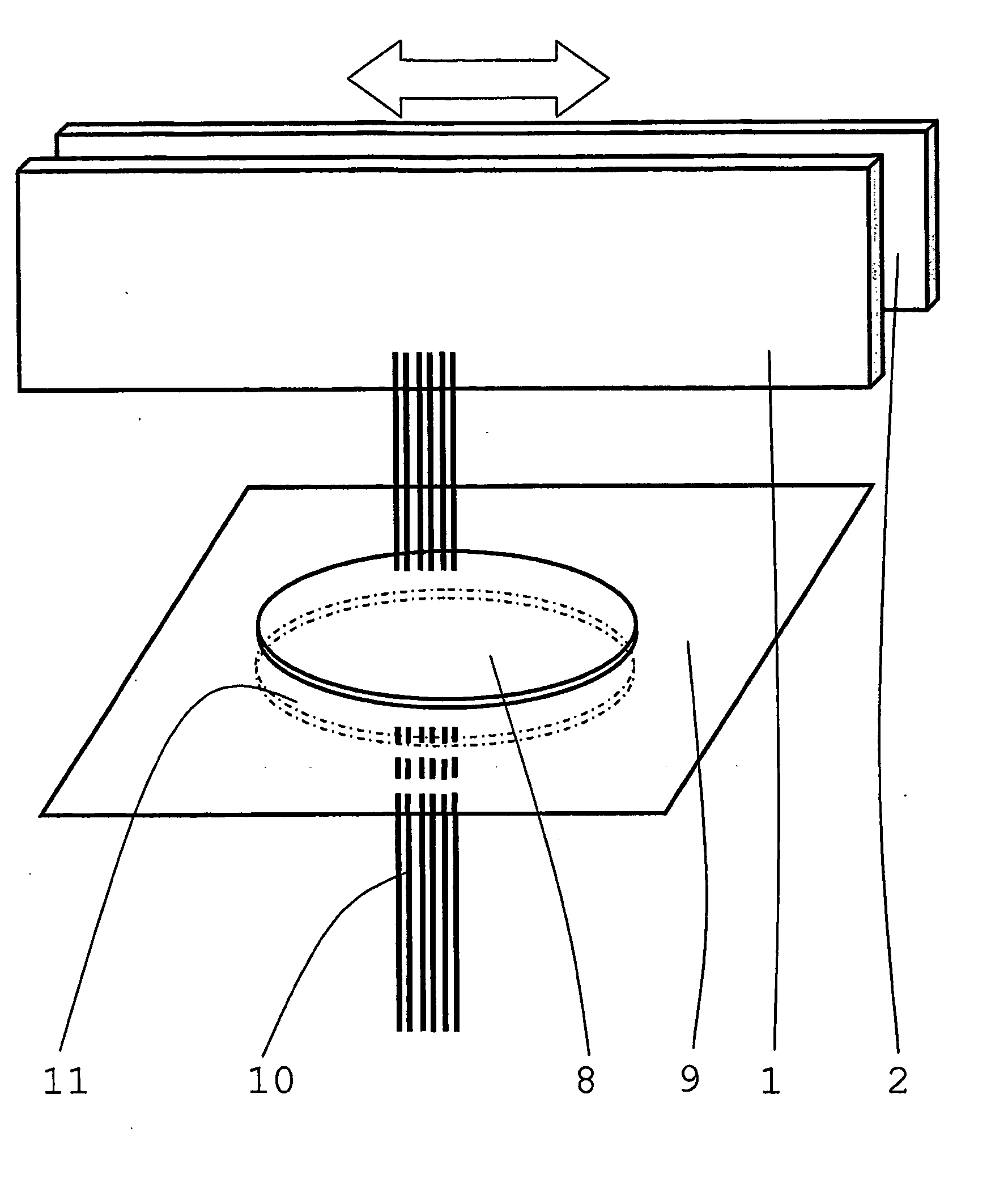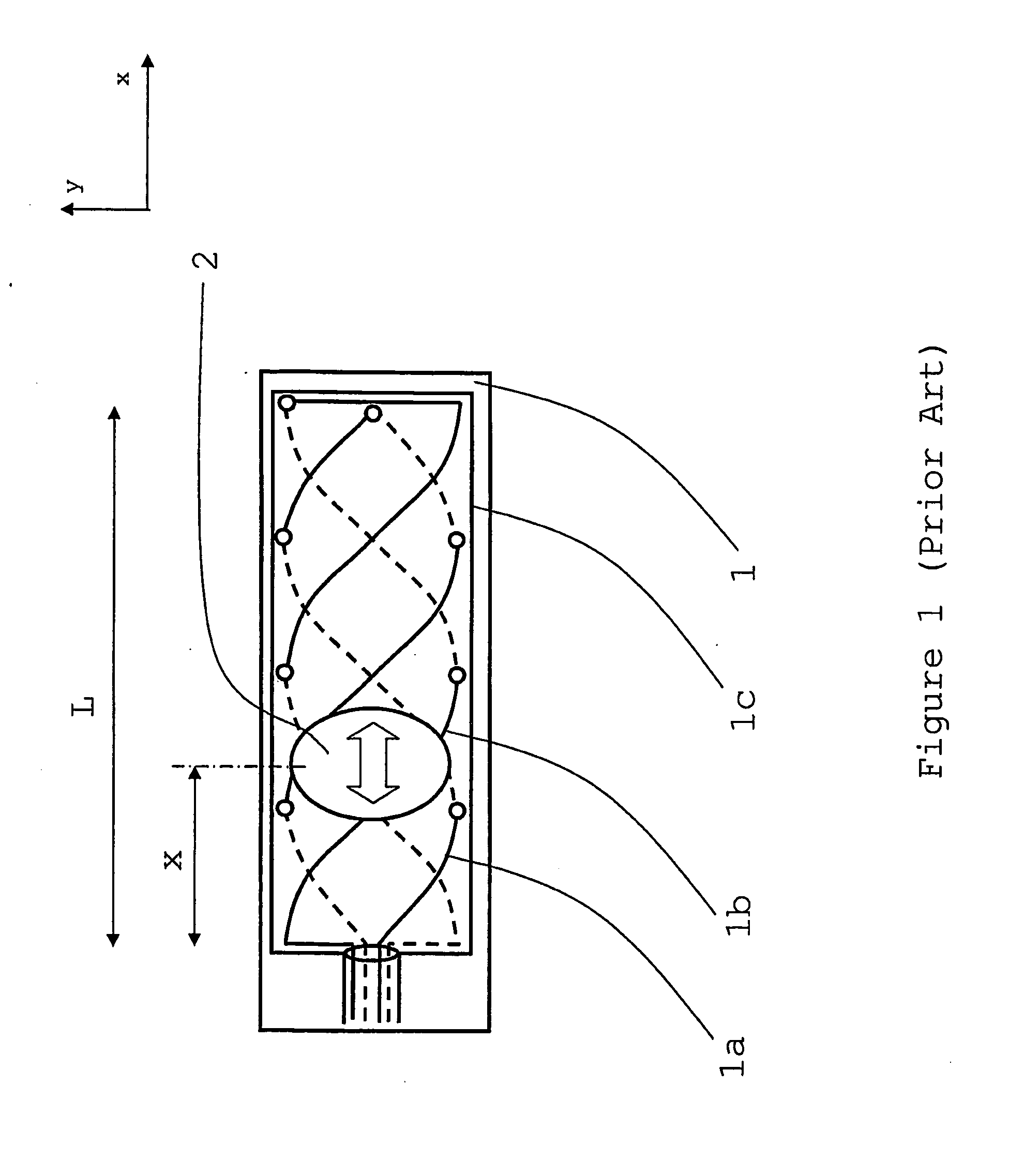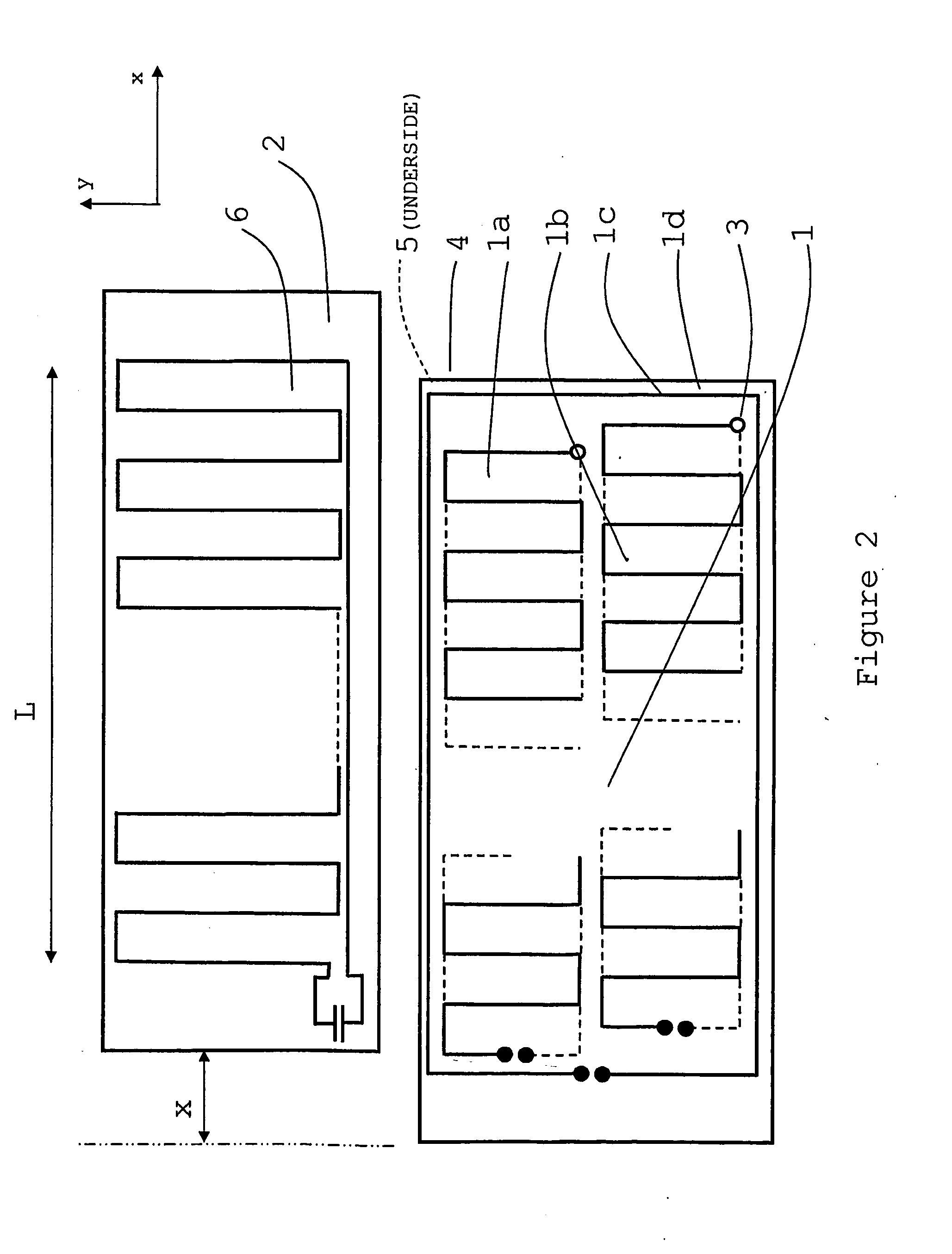Inductive position sensor
a position sensor and inductive technology, applied in the direction of measuring devices, instruments, coils, etc., can solve the problems of optical sensor obscuration, failure with little or no warning, optical system requires very fine optical gratings for high resolution measuremen
- Summary
- Abstract
- Description
- Claims
- Application Information
AI Technical Summary
Benefits of technology
Problems solved by technology
Method used
Image
Examples
Embodiment Construction
[0056]FIG. 1 shows a simplified, schematic, plan view of a known form of position encoder. An antenna [1] contains a sinusoidal receive winding [1a] and a cosinusoidal receive winding [1b], surrounded by a transmit winding [1c] co-operating with an electrical intermediate device [2]. The two receive windings [1a &1b] are displaced by ¼ of the winding pitch along the measurement (x) axis. The two receive windings [1a &1b] are arranged in series of loops along the measurement axis such that voltages induced in adjacent loops oppose each other. The loops in the receive windings [1a &1b] are formed using via or plated through holes positioned on either side of the measurement axis. It should be noted that in this much simplified example only 8 vias are shown for reasons of clarity. However, in practice, each of the receive windings [1a &1b] is likely to use multiple turns in each loop and consequently many more than 8 vias will be required. >100 vias may be required if a multi-pitch arr...
PUM
 Login to View More
Login to View More Abstract
Description
Claims
Application Information
 Login to View More
Login to View More - R&D
- Intellectual Property
- Life Sciences
- Materials
- Tech Scout
- Unparalleled Data Quality
- Higher Quality Content
- 60% Fewer Hallucinations
Browse by: Latest US Patents, China's latest patents, Technical Efficacy Thesaurus, Application Domain, Technology Topic, Popular Technical Reports.
© 2025 PatSnap. All rights reserved.Legal|Privacy policy|Modern Slavery Act Transparency Statement|Sitemap|About US| Contact US: help@patsnap.com



